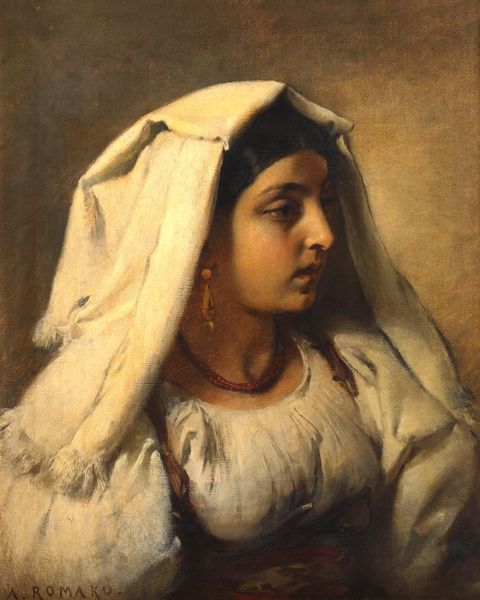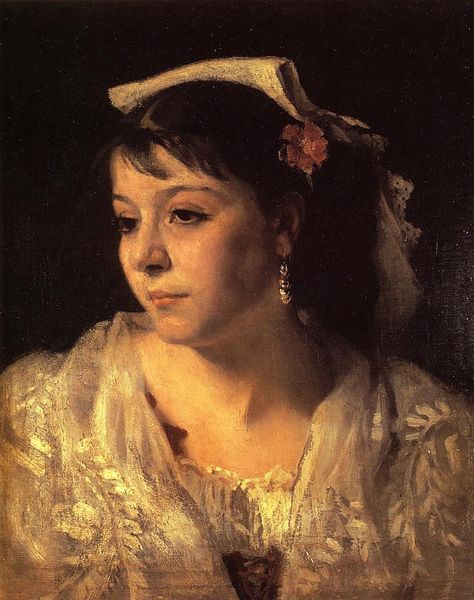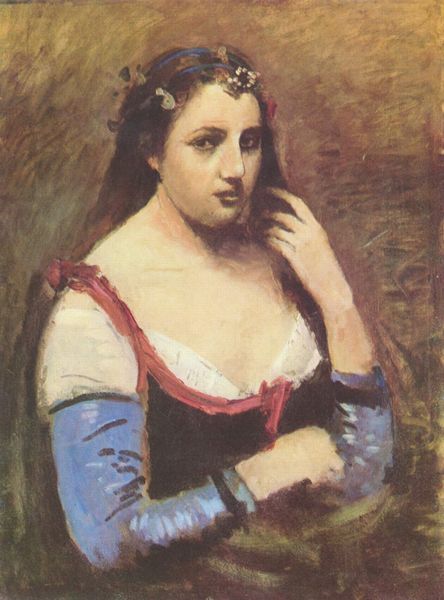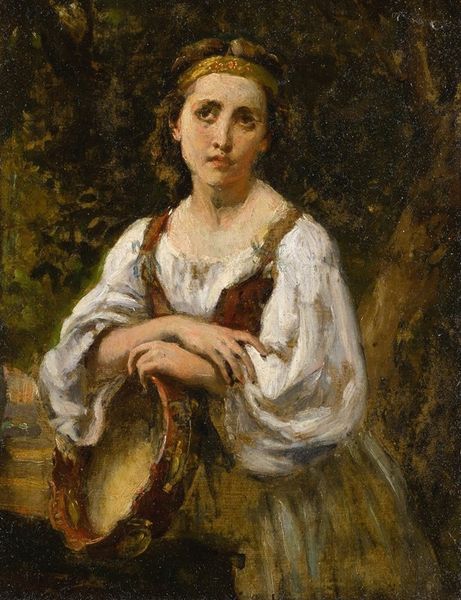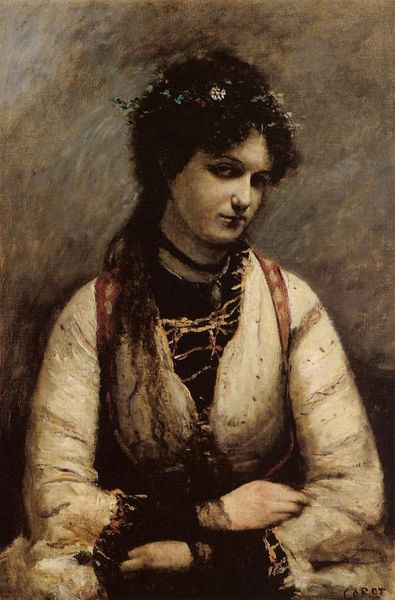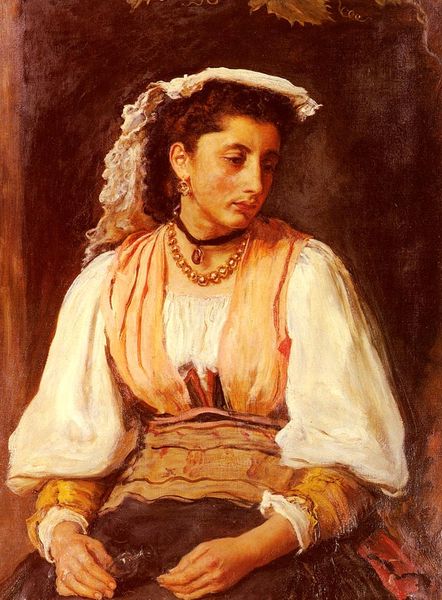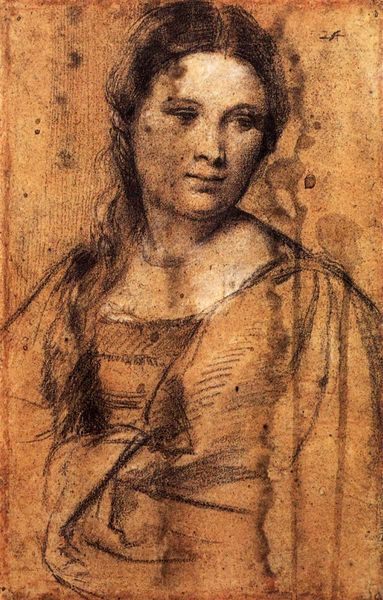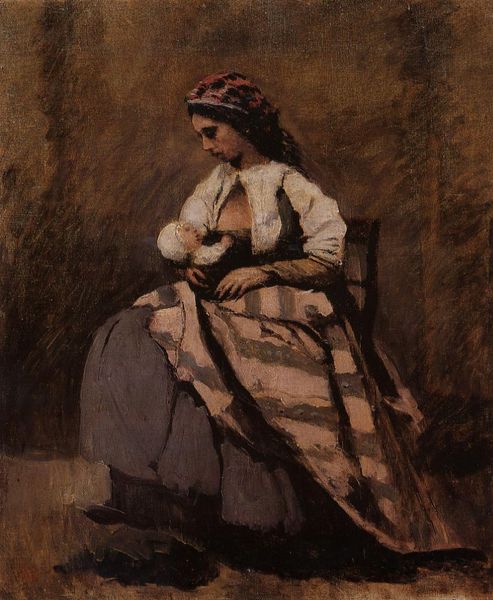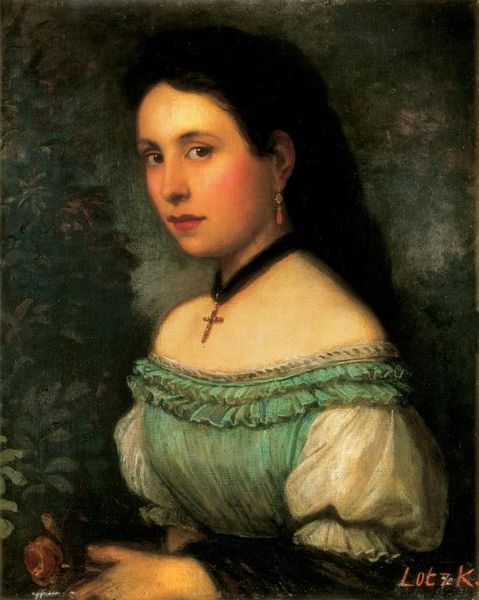
Dimensions: 70 x 55 cm
Copyright: Public domain
Curator: Here we have Camille Corot's "The Woman with a Pearl," painted around 1870. It currently resides here at the Louvre. Editor: Oh, she's beautiful! Her expression is so enigmatic, like she's holding a secret. There's a calmness to her. I wonder what she's thinking about. Curator: Corot was deeply immersed in the artistic currents of his day. Though "The Woman with a Pearl" might at first appear as a simple portrait, it also speaks to the growing interest in representing universal humanity during this era, a concept popularized through burgeoning modern art markets. Editor: Yes, the markets and public perceptions of art play such a critical role. Beyond that, there is something in her expression which is undeniably alluring. Is it romantic? Is it wistful? I feel a kind of sadness mixed with serene acceptance. The soft light definitely contributes to this. Curator: Absolutely. Corot used very subtle tonal variations and a subdued palette, drawing inspiration from the Italian Renaissance masters he so admired. We should note how Corot often exhibited at the Paris Salon. This portrait became popular among an increasingly bourgeois population which in turn amplified this particular style as an expression of upward social mobility. Editor: Ah, it's amazing how historical context seeps into everything. Thinking of my personal connection, I keep circling back to her eyes, so luminous. I also wonder about that pearl. Curator: She might not even *be* wearing a pearl; many believe "pearl" refers to her luminescent quality, a fashionable poetic embellishment used in exhibition titles, and later reproduced as engravings for popular consumption. But these adornments shaped her reputation, transforming her into an alluring symbol for France’s wealthier populations. Editor: Intriguing. She becomes both individual and representation. To sum up, what strikes me about this is the enduring power of portraiture to both capture and create. Curator: Yes, "The Woman with a Pearl" remains a compelling case study of 19th-century artistic conventions, shaped by a developing, public, art market.
Comments
No comments
Be the first to comment and join the conversation on the ultimate creative platform.
